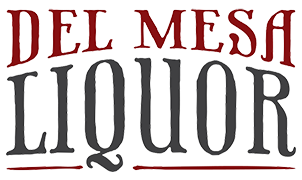Stepping into the world of wine can often feel like stepping into a different realm, filled with its language of tastes, textures, labels, and regions. The intimidating array of bottles at an alcohol store is more than just about finding the most expensive or well-known brand; it's an adventure into a nuanced world of indulgence. But before you shudder at the idea of navigating this unfamiliar territory, rest easy.
This comprehensive guide is designed to decode the labyrinth of wine etiquette and arm you with the skills to elevate your wine experience. This article will empower you to partake in wine drinking like an expert by helping you make an informed choice from the seemingly endless options available to know how to savor your chosen bottle.
Whether you are a novice exploring wine for the first time or an enthusiast keen on refining your knowledge, these tips will transform you into a sophisticated drinker capable of enjoying wine with confidence and elegance. Let's raise a toast to the journey of understanding wine better and immersing ourselves in its delights.
Choosing Wine From An Alcohol Store
Selecting a bottle from the rows and rows of wine at an alcohol store can be overwhelming. The key is to understand your preference and occasion. Whether you're in the mood for red, white, or rosé, remember there's no 'best' wine—only the one you enjoy the most.
Consider the occasion and the menu, if any. Lighter wines pair well with lighter dishes, while robust wines match heartier meals. If you're unsure, ask the store's knowledgeable staff for recommendations—they can often point you towards an unexpected gem.
Correct Storage Is Key
Once you've picked your wine, proper storage is crucial to maintain its quality. Please keep it in a cool, dark place, with the bottle on its side, to keep the cork moist. Wine coolers are great for this purpose, but a dark cupboard can work well too.

Serving Wine: Temperature And Glassware
Serving wine at the right temperature brings out its optimal flavor and aroma. In general, serve white wines chilled, while red wines should be at room temperature. However, 'room temperature' doesn't mean the usual 70-75°F. It refers to 'cellar temperature,' about 60-65°F, which is more suitable for red wines.
As for glassware, each wine has a glass style that best compliments its characteristics. For instance, red wines are typically served in glasses with a giant, rounder bowl to allow the wine to breathe, while white wines are served in narrower glasses. When pouring, fill the glass only to the widest point, not to the brim, to let the wine's aromas release.

The ritual of wine tasting is a multi-sensory experience that involves three essential steps - observing the wine visually, inhaling its aroma, and, finally, tasting it. This process is more than just drinking; it's about immersing yourself in each wine's sensory pleasures.
- Look: The first step in the wine-tasting process is observation. Hold the wine glass against a white background to assess the color and clarity. The color hints at the grape variety and the wine's age. A deep, intense color could indicate a higher concentration or an older wine. The clarity can also speak volumes about the wine's quality. A hazy appearance might suggest faults in the wine, while a clear, bright wine usually signifies good quality.
- Smell: Next, gently swirl your wine glass in a circular motion. This action aerates the wine, releasing its bouquet of aromas. The scent of wine often provides insight into its character and quality. By inhaling deeply, you can identify various fragrance notes. These aromas range from fruits, flowers, and spices to more complex ones like tobacco, earth, or chocolate. Every wine has a unique aroma profile, and part of the joy of wine tasting is identifying these scents.
- Taste: Lastly, take a sip, but don't swallow immediately. Allow the wine to coat your tongue and palate, and try to identify the prominent flavors. Does it taste sweet, bitter, or sour? Do you notice flavors that align with the aromas you sensed? How is the texture - is it light, medium, or full-bodied? After swallowing, does the flavor change? This is called the wine's finish, and it can vary from short to long-lasting, simple to complex.
Remember, wine tasting is subjective. What's essential is not identifying every single note but enjoying the experience and discovering what appeals to your palate. The more you taste, the more refined your palate becomes, enabling you to discern and appreciate each wine's nuances.
The Art Of Wine Conversation
Being a sophisticated drinker involves more than knowing how to choose and taste wine; it also entails conversing about it. Discuss the wine's characteristics, like its aroma, flavor, and body. Try not to get too technical or pretentious—just share what you enjoyed about the wine.
Final Thoughts
Mastering wine etiquette is an ongoing journey that is as enjoyable as it is enriching. The more wines you taste, the more you refine your palate and deepen your appreciation. Whether you are selecting a bottle from an alcohol store, serving it at a dinner party, or discussing its attributes, remember that the true essence of wine drinking lies in its shared enjoyment. So, raise a glass, toast to good health, and savor the magic in every sip.
 Log in
Log in
 My Wishlist
My Wishlist Reward Program
Reward Program Corporate Gifts
Corporate Gifts Customer Help
Customer Help


